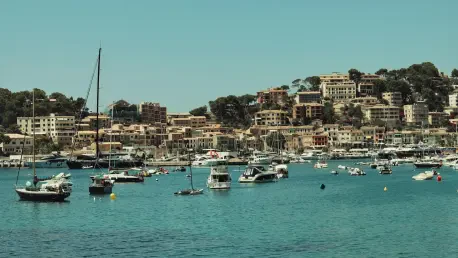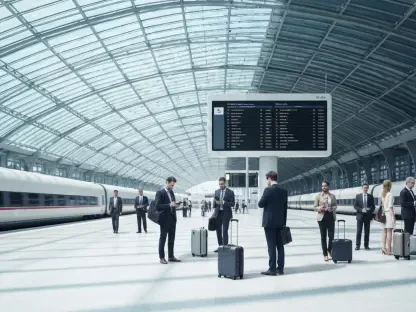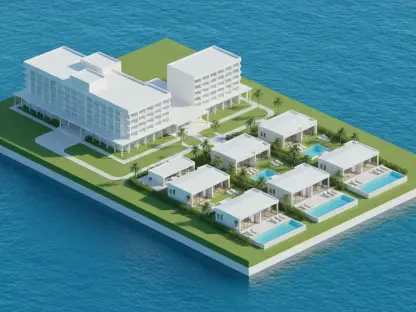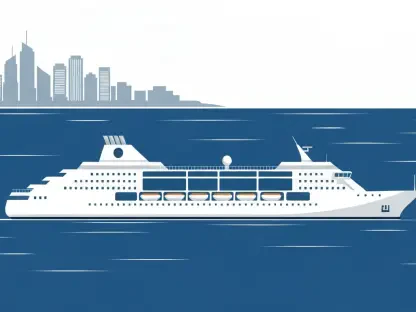Katarina Railko joins us today, bringing her expertise in the hospitality and tourism industry. With a deep understanding of the events and exhibition space, Katarina is well-equipped to discuss the current challenges and dynamics faced by popular tourist destinations in Spain, particularly under the strain of mass tourism. Her insights will shed light not just on the economic impacts, but on the socio-cultural tensions brewing in communities grappling with an overwhelming influx of visitors.
Can you explain the current situation regarding mass tourism in Spain and why it has led to widespread protests?
Certainly. Spain is currently experiencing a significant surge in tourism, which has heavily impacted local communities, especially in hotspots like Majorca, Ibiza, Barcelona, and the Canary Islands. The scale of visitors is so substantial that it has started to overwhelm the infrastructure of these areas. The protests arise from residents feeling that their quality of life is deteriorating due to overcrowded public spaces and resources, driven by this tourist influx.
What are some of the major grievances that locals in Majorca, Ibiza, and other parts of Spain have about the influx of tourists?
Locals are particularly concerned about soaring housing prices, which have become unaffordable due to the aggressive conversion of residential spaces into tourist accommodations. The cultural fabric and identity of these communities are being threatened, with everyday areas transformed primarily for the benefit of tourists rather than residents, leading to a sense of displacement.
How have skyrocketing housing prices been linked to the tourism industry in these regions?
The tourism industry, especially the short-term rental market, has significantly contributed to the rising housing prices. Properties are now frequently used as holiday rentals instead of homes for local families. This demand has escalated rents and property values, making it extremely difficult for locals to afford living in their own communities.
What role do short-term holiday rentals, like those from platforms such as Airbnb, play in the protestors’ concerns?
Short-term holiday rentals are central to the protests because they are seen as a root cause of the housing crisis. They convert what were historically residential neighborhoods into hubs for transient tourism, which impacts community cohesion and reduces the availability of long-term rental housing for locals.
Can you give specific examples of how these short-term rentals are affecting residential communities?
In many neighborhoods, short-term rentals have become so prevalent that large portions of buildings or streets are occupied primarily by tourists. This change affects community dynamics and local businesses, which may shift their focus to catering to tourists rather than residents. Moreover, it’s not uncommon to see increased noise levels and a lack of security as properties change hands so frequently.
How are locals expressing their frustrations during these protests?
Locals have taken to the streets, organizing large demonstrations with banners and placards. These protests are vocal and sometimes disruptive, as locals confront tourists directly or block popular tourist areas to make their point clear. The demonstrations are a powerful form of grassroots activism seeking to compel authorities to take action.
What impact have these protests had on tourists who are visiting Spain’s popular destinations?
For tourists, these protests can be surprising and unsettling, as they can disrupt the vacation experience. Some tourists have found themselves caught amid these demonstrations, which can lead to a tense atmosphere. However, it also raises awareness among visitors about the deeper issues faced by local communities.
How have authorities and law enforcement responded to the protests?
Authorities and law enforcement have had to strategically manage these protests, often deploying officers to maintain peace or defuse heightened tensions during demonstrations. Some efforts are focused on protecting tourists while also respecting the rights of locals to voice their concerns.
Are there other areas in Spain besides Majorca and Ibiza that are experiencing similar tensions with tourism?
Yes, besides Majorca and Ibiza, Barcelona and the Canary Islands are also experiencing similar tensions. These areas are significant tourism draws and, like the Balearics, face similar challenges concerning overpopulation during peak tourist seasons and its social ramifications.
How are these demonstrations connected to broader movements across Europe addressing high-volume tourism?
These demonstrations are part of a wider European trend where cities heavily reliant on tourism, like Venice and Amsterdam, are also experiencing tensions. These common grievances revolve around the same themes: housing affordability, community integrity, and sustainable tourism practices.
What solutions are local activist groups proposing to address the effects of mass tourism?
Activist groups are calling for policy changes such as stricter regulations on short-term rentals, visitor caps in fragile areas, and more sustainable tourism initiatives that prioritize the needs of residents over short-term economic gains.
Are there any governmental or policy changes currently being considered to regulate the impact of tourism on local communities?
The Spanish government, along with regional authorities, is considering implementing measures like limiting short-term rental licenses, adjusting taxation policies to discourage property speculation, and possibly limiting the number of tourists entering certain areas at peak times.
Given that tourism is a vital part of Spain’s economy, how can policymakers balance the sector’s interests with the needs of local communities?
Policymakers need to develop approaches that both safeguard local communities and preserve tourism’s economic contributions. This might involve promoting off-peak tourism, diversifying local economies beyond tourism, and investing in infrastructure that supports both residents and visitors.
How important is tourism revenue to the regions that are currently protesting?
Tourism revenue is crucial to these regions as it supports numerous jobs and businesses. However, the challenge lies in ensuring that this revenue benefits everyone, including local residents who are currently feeling marginalized by the heavy tourism focus.
What has been the cultural and environmental impact of mass tourism on these local communities?
Culturally, the identity of these regions is at risk, as local traditions and ways of life are overshadowed by tourist-driven economies. Environmentally, there’s a significant burden on local ecosystems, ranging from increased waste to the degradation of natural landscapes.
How do the protests reflect the growing tension between economic benefits and quality of life for residents?
The protests highlight the struggle many communities face in balancing economic reliance on tourism with maintaining a livable environment for residents. It’s a clear message that while tourism brings financial gains, it should not come at the expense of community stability and wellbeing.
What future actions or responses are anticipated from the Spanish government and regional authorities to address this ongoing issue?
Future actions may include implementing more robust regulations for tourism management, such as capping rental properties and creating incentives for community-friendly business practices. Authorities may also work on new models that encourage more sustainable and equitable tourism.
What can tourists do to be more mindful and respectful when visiting these popular destinations during times of protest?
Tourists can be more respectful by choosing accommodations that support the local community, visiting during off-peak times, and educating themselves about the local culture and issues. Being mindful of their impact on the community can help support sustainable tourism practices.









